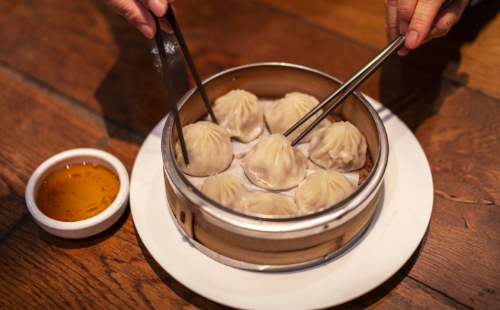Shengzhou announces standards for traditional snacks

Shengzhou steamed buns are a traditional snack in Shaoxing. [Photo/Zhejiang Daily]
Six standards for Shengzhou snacks were recently officially implemented.
The standards were drafted by more than 30 entities, including the Shengzhou municipal market supervision bureau, schools, enterprises, and stores.
Shengzhou snacks have been around for a thousand years. Through generations, over a hundred varieties of snacks have developed, including steamed buns and rice cakes.
These standards include the "Store Operation and Service Norms," "Steamed Bun Production Norms," "Frozen Steamed Buns," and "Rice Cakes."
According to sources, the snack standard "Store Operation and Service Norms" subdivides Shengzhou snack stores into three types: standard, branded, and flagship. It outlines requirements for entry thresholds, operational premises, infrastructure, and personnel qualifications. The standard also covers information disclosure, operational environment, ingredient procurement, food safety, and waste management. Full-service requirements for ordering, dining, billing, receiving, and delivery are also defined.
The "Steamed Bun Production Norms" highlight special techniques like "no baking powder, fermentation with old dough, and handmade wrapping." The norms detail product classifications, raw materials, production processes, steaming and storage methods, sensory qualities, and more. It explicitly outlines dough composition, fermentation conditions, filling preparation, dough-to-filling ratio, steaming time, and optimum consumption timing.
The standards for "Frozen Steamed Buns" and "Rice Cakes" emphasize product characteristics and incorporate relevant national technical requirements. They specify technical requirements for raw materials, sensory properties, physical and chemical characteristics, microbiological limits, food additives, production and processing hygiene, net content, inspection methods, rules, labeling, packaging, transportation, and storage.


 Shaoxing Showdowns
Shaoxing Showdowns Zhejiang: A Decade of Progress
Zhejiang: A Decade of Progress Shaoxing in expats' eyes
Shaoxing in expats' eyes